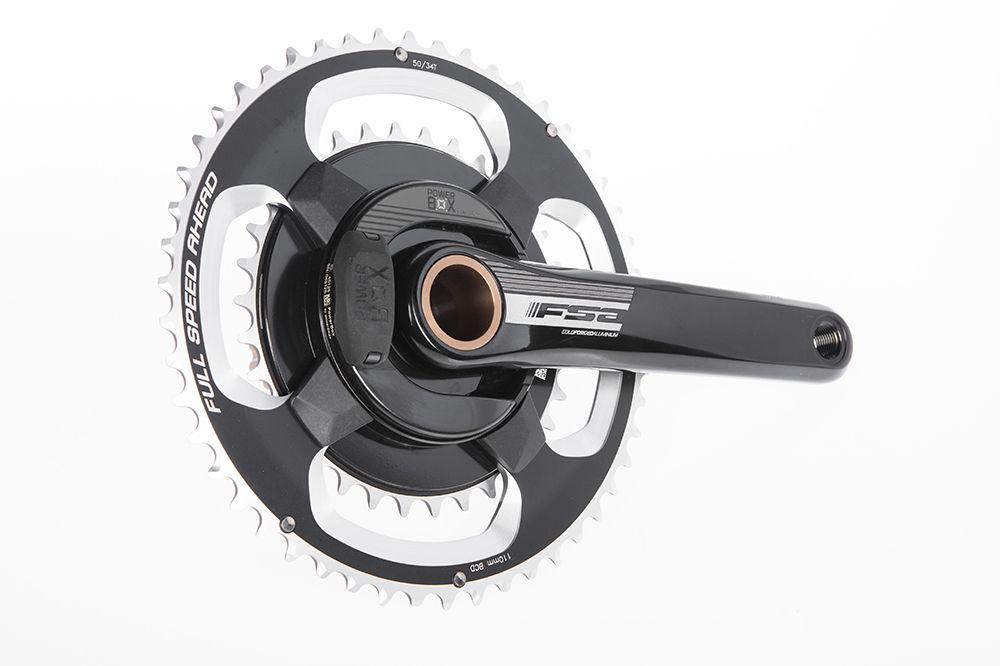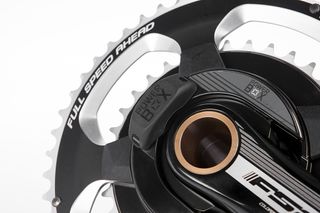FSA Powerbox power meter review
FSA has branched out from accessories like handlebars and stems into full groupsets; it's now dipped its toe into the power meter market with the new FSA Powerbox power meter

The Powerbox is not really one for weight weenies, and there are power meter options that weigh a lot less and are cheaper but I would have no qualms in recommending this to get through the worse a winter can throw at it and still come out the other side in full working order, something that was the initial aim for the product.
-
+
Reliable
-
+
Accurate
-
+
110 BCD across chainring sizes
-
+
Both leg reading compatible
-
+
Frequent self calibration
-
+
Ease of setting up
- +
-
-
Have to use an FSA chainset
-
-
There are lighter power meter options
-
-
30mm spindle only
-
-
Chainset power meters are not the easiest to transfer across bikes
- -
You can trust Cycling Weekly.

Italian component manufacturer FSA has combined its wealth of experience with that of respected wireless electronic and power measuring experts Power2Max – a German company – to create the FSA Powerbox power meter. Power2Max has been producing power meters since 2010.
The FSA Powerbox power meter is supplied to the likes of Astana, Cofidis and Direct Energie as well as other pro teams. However, this partnership has allowed FSA to price one aluminium four-armed chainset (tested here) at the lower end of the price market, with a hollow carbon-cranked version available but at nearly double the price aimed at the higher end.
>>> Buy now: FSA PowerBox power meter from Wiggle for £566.96
As with all good things German, reliability, good design and accuracy are at the heart of the product’s remit. In the three months I’ve been using it the reliability has been impressive, something that with other power meters has frustrated me in the past. The only time I had cause for concern was when the data kept flicking on and off, something that was resolved at the side of the road by wiggling the easily accessed battery about; since then I haven’t had this problem again.

It’s typical that when you need to give electronic kit a wet weather test you get an unseasonably dry spell, I would have really liked to test in real world conditions the robustness of the FSA Powerbox power meter to see if ingress of water would be a problem, so, going against Power2Max’s recommendation I’ve had to resort to giving it the odd blast with a hose pipe, nothing too serious, just comparable to a good bike wash.
Despite the only thing between the battery and the outside world being a rubber slip-on cover, which initially caused concern, I’m happy to report this simple solution held good and no issues have come up.
I’ve found it to give a consistent accurate reading. FSA claims a ±2% discrepancy. Response time is also impressive with the unit waking up and linking to a head unit very quickly – in fact it’s been activating itself and linking to a head unit long before any GPS satellites have been found. Information is relayed in one second intervals.
The sensors are located in the four-arm spider. A 110mm BCD chainring is standard despite the chainring configuration giving comprehensive size options and upgrading, and works with the big three component manufacturers.
The spindle only comes in 30mm, so it’s not compatible with Shimano bottom brackets. Crank lengths available are 170mm, 172.5mm and 175mm.
FSA claims the battery life is good for 400 hours of use, something that I can’t claim to have tested but I’ve no reason to believe from the hours that I’ve put in that battery life will be a problem.
The FSA Powerbox power meter has the capacity to relay measurements for both legs, although the software to read it hasn’t been released just yet; FSA claims the app won’t be available until September 2017. Bluetooth connectivity is available with a firmware upgrade but isn’t standard.
As accuracy can be affected by the temperature, thermal correction is taken into account every time the crank stops turning for more than two seconds. The unit also takes this opportunity to self calibrate.

Thank you for reading 20 articles this month* Join now for unlimited access
Enjoy your first month for just £1 / $1 / €1
*Read 5 free articles per month without a subscription

Join now for unlimited access
Try first month for just £1 / $1 / €1
Get The Leadout Newsletter
The latest race content, interviews, features, reviews and expert buying guides, direct to your inbox!
Simon Smythe is a hugely experienced cycling tech writer, who has been writing for Cycling Weekly since 2003. Until recently he was our senior tech writer. In his cycling career Simon has mostly focused on time trialling with a national medal, a few open wins and his club's 30-mile record in his palmares. These days he spends most of his time testing road bikes, or on a tandem doing the school run with his younger son.
-
 ‘The major update I’ve been waiting for’ - Hammerhead Karoo computers now support third-party apps
‘The major update I’ve been waiting for’ - Hammerhead Karoo computers now support third-party appsHammerhead users can now access third-party weather, data and training apps directly on Karoo cycling computers
By Anne-Marije Rook Published
-
 SBT GRVL introduces Women’s Team Race Challenge, expands female participation in sold-out event
SBT GRVL introduces Women’s Team Race Challenge, expands female participation in sold-out eventNew team-based format encourages amateur female cyclists to race together, offering a $3,000 prize purse and additional registration spots
By Anne-Marije Rook Published
-
 'It's a great place to start' - Edinburgh MP 'absolutely' backs Tour de France Grand Départ in 2027
'It's a great place to start' - Edinburgh MP 'absolutely' backs Tour de France Grand Départ in 2027Scottish city expected to host opening stage of the Tour de France, according to reports
By Tom Davidson Published